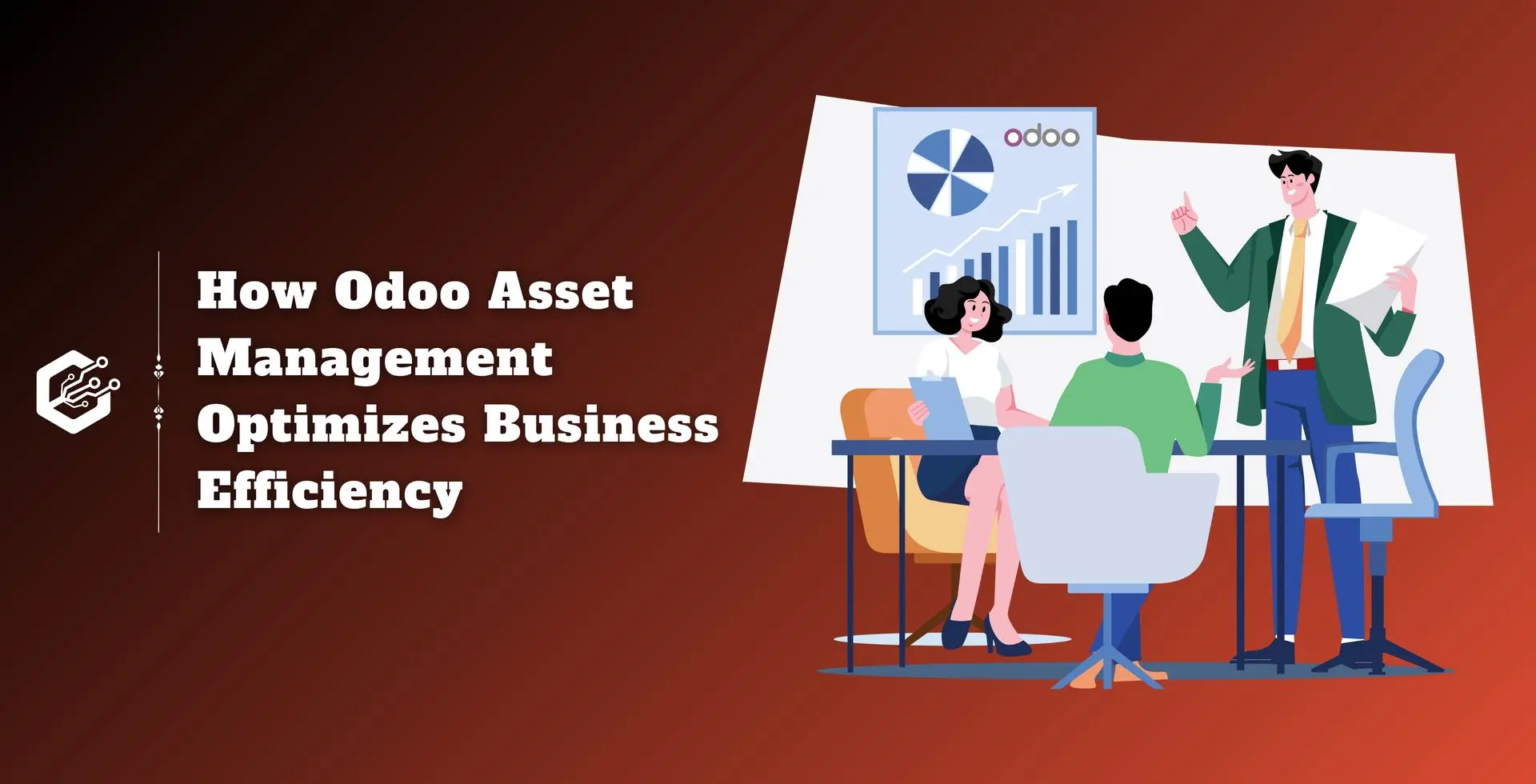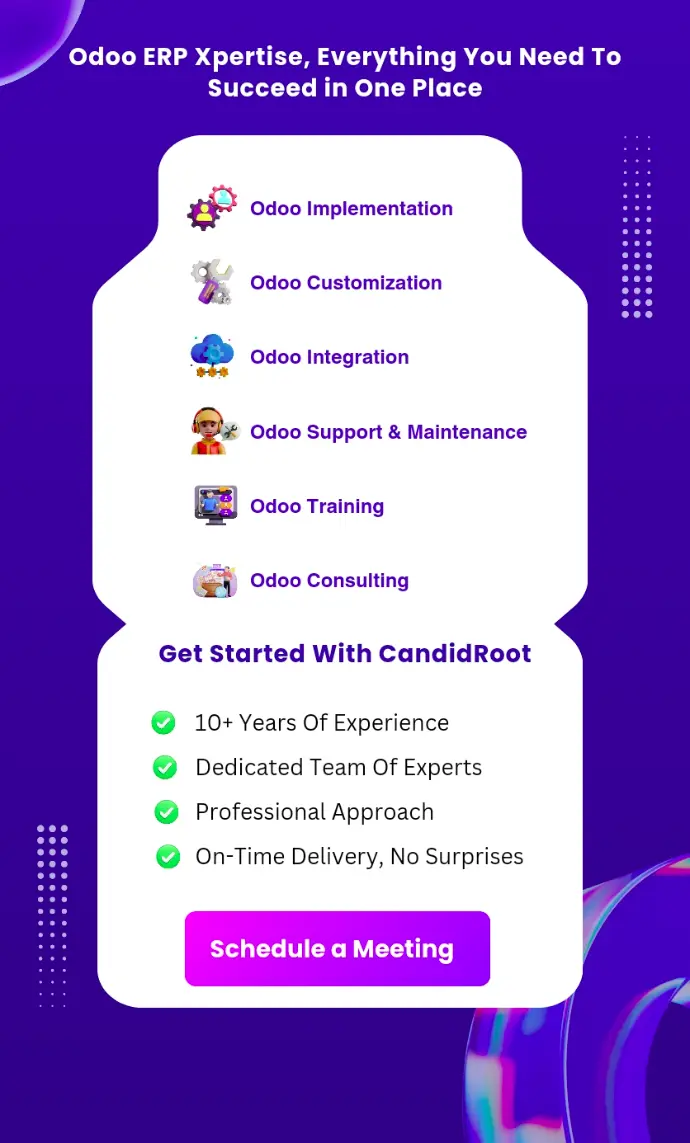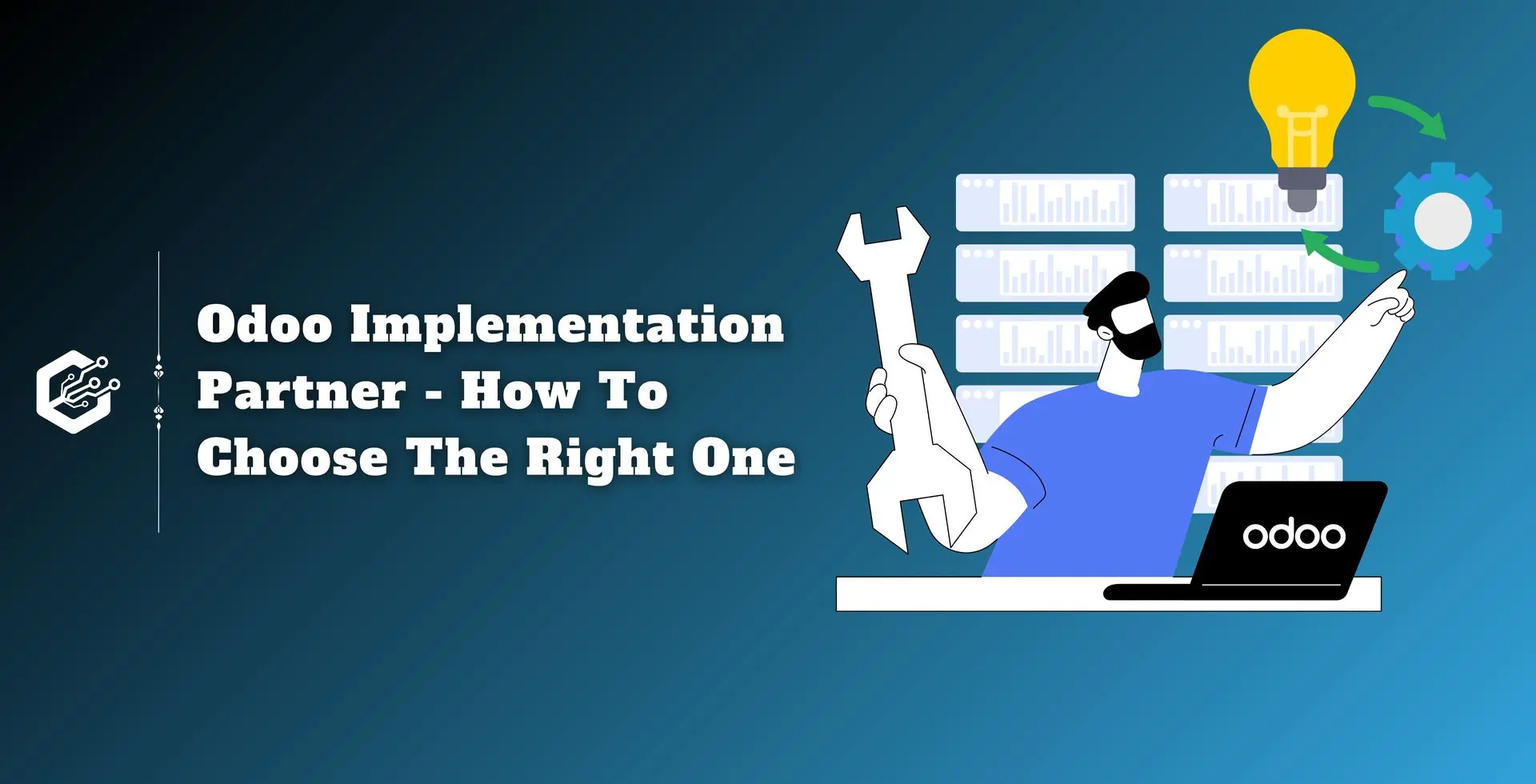Managing assets is vital for business success, but companies still struggle to track, maintain, and optimize them. Did you know that 66% of businesses struggle with asset management?
You can manage an organization's assets effectively, from acquisition to disposal, with the application of Odoo Asset Management. Moreover, you can optimize your performance and cut the costs too. Looking to take your business to the next level? Let's see how proper asset management can take you to maximum productivity and savings!
What is Odoo Asset Management?
The Odoo Asset Management module is powerful. It is part of the large Odoo suite of ERP tools. Odoo Asset Management helps you track, manage and optimize your assets. Organizations can simply manage the entire lifecycle of their assets, from acquisition through maintenance to disposal. Unlike conventional asset management systems, Odoo can efficiently integrate with other Odoo applications such as Finance, Inventory, and Maintenance into a single versatile source.
Automation is the key enabler in Odoo Asset Management that helps reduce the manual input of data, lowers possible errors, and allows efficient tracking of asset utilization and depreciation. Whether in manufacturing, managing machinery, or logistics, Odoo Asset Management has the tools to satisfy your needs.
Features of Odoo Asset Management
Odoo Asset Management has a wide range of features in tackling every aspect of asset management. Some of the more prominent features include:
1. Asset Tracking
Businesses maintain tracking of their assets in real time with Odoo Asset Management. With Odoo, you can track assets and confirm the situation, condition, and location of your possessions. GPS tracking, barcode scanning, and RFID technology integration make sure that every asset is accounted for at every phase of its life cycle. With such tracking features, losses can be avoided, accountability is enhanced, and useful asset life can be optimally ensured.
2. Depreciation Management
One of the greatest challenges in managing assets is calculating and accounting for depreciation. Odoo eliminates this process by having built-in depreciation schedules. The depreciation is calculated automatically by the system according to the straight-line or declining balance method applied and in compliance with the accounts. The system also tracks the asset value, i.e., the real-time insights for an asset's financial health.
3. Asset Valuation
Odoo allows companies to value their assets accurately and uniformly. The determination of asset values generally depends on the initial cost, the expenses involved in its upkeep, and depreciation rates. These values are essential in making better financial decisions regarding budgeting for replacements or selling old equipment. The real-time assignment of asset values gives organizations a timely status of their asset portfolio and adjusts long-term financial objectives.
4. Asset Maintenance
Asset management involves more than tracking and valuing assets. It also includes actual maintenance to ensure that assets perform optimally. By closely monitoring maintenance schedules, companies reduce downtime, variable costs, and asset life, contributing positively to their efficiency.
5. Reporting and Analytics
Odoo has powerful reporting and analytical tools that can provide businesses with detailed insights into asset management. Reports can be generated on asset depreciation, performance, and maintenance execution. From customizable dashboards, users can easily track asset KPIs on utilization efficiency, financial depreciation, and maintenance costs. All this data enables decision-makers to isolate inefficiencies and potential cost savings.
Benefits of Using Odoo for Asset Management
The adoption of Odoo Asset Management presents enormous benefits to businesses. Given below are a few of the major advantages:
1. Centralized Data
Odoo brings all the data related to assets onto one single platform. It eliminates the need to maintain several different systems or spreadsheets. This minimizes the chance of errors greatly and ensures easy access to asset data for decision-making or compliance. Making it easier for your teams to collaborate on centralized data. Having shared access helps communication and decision-making across various departments.
2. Improved Efficiency
This is where Odoo shines in automating asset management activities, like the calculation of depreciation, maintenance schedules, and even tracking of assets. It saves enormous amounts of time and labor on manual processes. It allows employees to engage in more strategic issues. This means if anything troublesome occurs, the organization would have insight into asset data in real-time and would address it. The smooth functioning of business entities is ensured without any unforeseen delays and disruptions.
3. Cost Savings
Odoo makes sure the companies avoid financial errors ranging from under-repairing to gross over-valuation of their assets. The system also helps keep maintenance on track due to automated alerts and notifications. It helps avoid expensive repair costs that arise from neglect. Odoo will assist your organization in establishing a fair valuation of assets and management of depreciation. It promotes better financial decision-making, eliminating unnecessary capital outlays.
4. Compliance and Risk Management
In an increasingly regulated business environment, compliance with accounting standards and regulations is a must. With Odoo Asset Management, making depreciation calculations and reporting ensures that the client is compliant with financial reporting and taxation. It helps avoid penalties due to non-compliance and keeps businesses abreast of the most recent regulatory shifts.
Odoo Asset Management Types
Odoo Asset Management is not restricted to only one type of asset. The platform manages different kinds of assets across sectors and industries. The following are the major types of asset categories that can be managed by companies using Odoo:
1. Fixed Assets
Fixed assets are long-term investments that are important for your business operations. Land, buildings, machinery, vehicles and more are often categorized as fixed assets. These fixed assets are heavily involved in the regular business activities of the company.
The system computes depreciation automatically, schedules planned maintenance, and confirms adherence to accounting standards. Through the clear view of the whole life cycle of each asset, Odoo helps customers in
- Prolonging the life of assets
- Reducing repair costs
- Optimizing the usage of these valuable resources
2. IT Assets
IT assets, such as computers, servers, and networking equipment, are important to run a modern-day business. With technological change happening at lightning speed, effective tracking of IT assets has to take care of minimizing downtime and increasing productivity.
Odoo provides an opportunity for a business.
- To keep records of the conditions, location
- Tracking management of IT equipment
- Scheduling its maintenance
- Replacing it on time
It prevents any unforeseen IT failures that would guarantee uninterrupted operations for the business without any costly interruptions.
3. Inventory Assets
Inventory assets encompass all goods kept for sale or use. They are important for your business to engage in retail, manufacturing and distribution. Odoo Asset Management is integrated with the inventory module which allows your business to track the value and status of inventory assets in real time.
This integration ensures accurate stock levels which reduces the risk of overstocking or stockouts. Good inventory management will
- Improve supply chain operations
- Reduce wastage
- Ensure the timely availability of the product.
4. Financial Assets
Financial assets such as investments, securities, and receivables require precise management for accurate financial reporting and forecasting. The Odoo accounting functionality will allow businesses to monitor and track the value and performance of their financial assets.
With Odoo generating reports and tracking ROI, businesses are able to optimize their investment strategies. They can remain compliant with financial standards while being able to make informed financial decisions. It helps move toward success in the long haul.
How to Implement Odoo Asset Management?
The implementation of Odoo Asset Management is quite easy especially in cases where Odoo ERP has been used for other activities within the business. The first step is to configure the system according to the business needs. For example, asset categories are set up, rules for depreciation are defined, and various accounting or finance modules are set up to integrate with other existing ones.
Following the above instances, companies can start importing their asset data either manually or by means of automated imports. Odoo’s user-friendly interface makes this process simple. Staff can be trained quickly to navigate the platform, and once it’s up and running, asset management becomes a more efficient and transparent process.
Real-World Examples of Odoo Asset Management
Several companies across different fields have effectively implemented Odoo Asset Management to enhance the efficiency of their operations. Case examples include:
- A manufacturing industry: With Odoo, they reduced downtime by 15% and cut down repair costs by 20%.
- An IT services industry: Odoo was used by the company to keep track of IT assets. It ensures that the replacement of old equipment takes place on schedule. It helps avoid expensive shutdowns and boosts employee productivity.
- A logistics industry: Odoo facilitated tracking of the fleet of vehicles, route optimization, and maintenance schedule management. It results in lower fuel costs by 10% and enhanced overall fleet efficiency.
Conclusion
Odoo Asset Management empowers you to maximize the asset value, driving overall efficiency. By centralizing data, streamlining asset tracking, and integrating smoothly with the Odoo ERP system, you can make better decisions faster, with reduced time and costs. The flexibility of Odoo implementation means organizations of all sizes can use this dynamic asset management solution to stay on top in this competitive market.
Odoo Asset Management does more than just track assets: it’s a significant investment in unlocking the true value of these assets to fuel your business growth and success.
Related Post:


